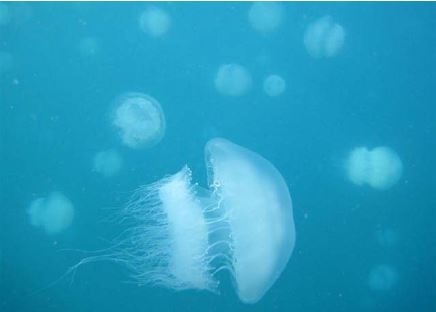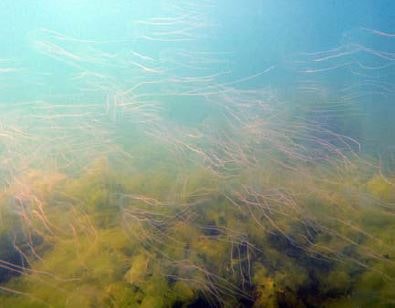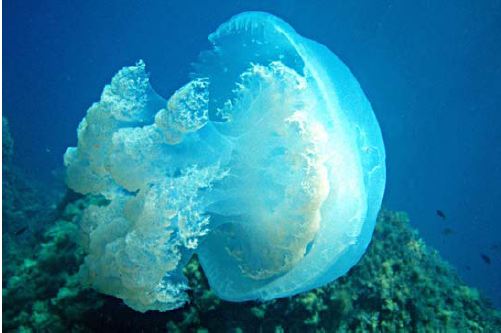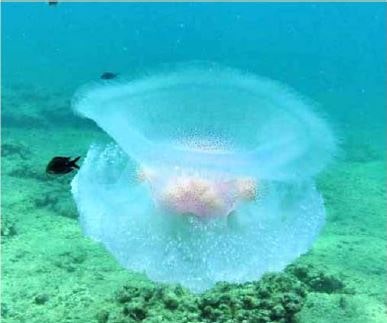3 CURRENT KNOWLEDGE AND RESEARCH NEEDS
Mills (1995, 2001) was the first to highlight a global regime shift from a fish to a jellyfish ocean. Since then, scant investments have been made to support research on these events, besides noticeable exceptions, such as the Black Sea, due to the appalling case of Mnemiopsis.
3.1. Analysis of the possible drivers of the phenomena
The knowledge on gelatinous plankton blooms is very sparse in the Mediterranean and Black Sea regions, with the exception of special periods in which funds have been made available to study these phenomena, especially in the Black Sea, due to the invasion of Mnemiopsis leidyi. The opportunities provided by traditional plankton sampling campaigns are not completely appropriate because they are focused on mesozooplankton, privileging crustacean plankton and, eventually, small jellyfish. A bloom of large jellyfish of any kind might impair plankton nets in no time or, if the specimens are sparse, might not be evaluated in the right way. The knowledge of these phenomena, thus, seriously needs focused sampling techniques to improve our knowledge that, currently, is mostly linked to episodic observations that can be considered as anecdotal.
The absence of focused projects on gelatinous plankton, and the inadequacy of the sampling gear to monitor plankton abundance and composition (focused on crustaceans), are conducive to a widespread lack of reliable information. Of course, when jellyfish blooms are recorded, the information is reliable, but the reverse is not true: the absence of records of jellyfish blooms is not a guarantee that these phenomena did not occur. Many researchers, for instance, if interviewed, do have memories of events of gelatinous plankton blooms, even though they never published accounts on them, since the projects they were working at did not consider gelatinous plankton and, also, because of low acceptance rates of articles reporting on such events, especially by highly ranked journals. The improvement of knowledge requires focused projects on these phenomena, by using the methods that will be described in the following section. As reported above, there is a global regime shift from a fish to a jellyfish ocean (Mills, 2001). The causes for this trend are not necessarily linked exclusively on global trends, but there are currently many phenomena that are occurring at a global scale and that might favor jellyfish blooms, namely:
Global warming, on the one hand, should enhance species that thrive at tropical latitudes but, on the other hand, species that are favored by cold waters should be in distress. If the species of warm water affinity are more and more abundant, and expand their natural ranges, such as Rhopilema nomadica (Fig. 15) in the
Levantine Basin of the Mediterranean Sea, it is also true that species of temperate affinity, like Mnemiopsis leyidi are also increasing, even in the warmest portions of the Mediterranean Sea.

Figure 15. Bloom of Rhopilema nomadica in the Levant Sea, coasts of Israel (courtesy of Bella Galil).
So, global warming is conducive to increases in the abundances of some species but, apparently, it does not have a negative impact on species that are not of tropical affinity. The favor to species of warm water affinity resides primarily in the presence of newly available conditions that allow the establishment of species of tropical affinity that entered the basins recently. Furthermore, the favorable windows for sexual reproduction are becoming wider, allowing further population increases.
Global overfishing is removing top predators from the oceans (Fig. 10). Fish larvae compete with jellyfish in eating crustacean zooplankton and if the adult populations are large, the number of produced larvae and juveniles might overwhelm the gelatinous plankton, outcompeting it. A lower abundance of fish, however, might release jellyfish from their competition and, if the jellyfish populations increase, a vicious circle is started, since they predate on their competitors, further reducing the resilience of the fish populations already impacted by overfishing.
There are also other causes that have been called for the increase of gelatinous plankton, and they are mostly local, such as the following:
Eutrophication has been invoked as a cause for jellyfish abundance. In the Mediterranean, however, an increase in nutrients in the water is usually conducive to algal blooms, and the link with gelatinous plankton blooms can be just circumstantial. The red tides and the mucilage events that characterized the ecology of the Adriatic in the last 20 years have been ascribed just to eutrophication and they did not lead to jellyfish blooms but, instead, they followed the Pelagia years and occurred in the absence of gelatinous plankton or, eventually, favored salps and other microphagous gelatinous plankters that, however, remained mostly unstudied.
Increased space for polyps ensuing, for instance, from the widespread use of hard coastal defenses and from the increase in tourist harbors can enhance jellyfish production by the benthic stages, when present in the life cycle. Furthermore, this might allow the persistence of species in certain areas, year after year. The cubozoan Carybdea marsupialis, for instance, has been recorded only recently from the Adriatic Sea (Boero and Minelli, 1986) but, in the last few years it is very abundant in correspondence of the coastal defenses that were built to prevent coastal erosion (Fig. 16). It is highly probable that the coastal defenses are a proper settling place for the polyps, so enhancing the spread of this stinging species.

Figure 16. Bloom of Carybdea marsupialis in correspondence of coastal defenses along the Adriatic coast of Italy.
Transport of non-indigenous species (NIS) is a very particular case, and applies well to the Black Sea, that became severely affected by the introduction of the alien ctenophore Mnemiopsis leyidi, then mitigated by the arrival of another ctenophore NIS (Beroe ovata) that feeds on Mnemiopsis.
These ctenophores are typical of the Atlantic coast of the American continent and reached the Black Sea due to direct human transport, presumably via the ballast waters of oil tankers. The widespread use of scenic jellyfish in public aquaria, such as Phyllorhiza punctata (Fig. 17), might lead to "escape" of polyps or even planulae, eventually leading to population outbreaks, but this possibility is purely hypothetical (Bolton and Graham, 2006).

Figure 17. Phyllorhiza punctata, recently recorded from the Western Mediterranean (art by A. Gennari).
Widening of the natural area of non-indigenous species is different from the previous case, since species can change their natural distribution while reaching areas where they had been previously unrecorded. The main recipient of non-indigenous species in the whole Mediterranean area is the eastern basin, now called Levantine basin in its extreme eastern portion. The opening of the Suez Canal, and the low diversity of that part of the Mediterranean basin, made so that the Red Sea species, expanding their natural range through the artificial waterway of the Suez Canal, thrived at the newly reached site, building up huge populations. This is the case of Rhopilema nomadica, a scyphozoan jellyfish (Fig. 15) that was described as new to science by Galil et al. (1990) from the Levantine basin but that was immediately considered as having entered the Mediterranean Sea through the Suez Canal, even if the species has never been found outside the Mediterranean area. Obviously, without human intervention (i.e. without the opening of the Suez Canal) no Indo-Pacific species would have widened its natural range so as to reach the Mediterranean Sea. In spite of this, these species cannot be considered as having been transported directly by humans, such as those introduced via aquaculture, aquarium trade, fouling, ballast waters, etc. Their reaching the Mediterranean might be considered as being human-mediated, via the construction of a connection between their natural area and another one, so allowing their expansion there, where the conditions are conducive to
their thriving. Other species, such as the recently recorded scyphozoan jellyfish Catostylus tagi (Fig. 18), entered from the Gibraltar Strait (Boero, 2011) and so really widened their natural range with no mediation by human action.

Figure 18. Catostylus tagi photographed at Pantelleria Island (picture by Maria Ghelia).
Overall, overfishing and global warming are probably the most important drivers of increased jellyfish presence in the global ocean and, with due exceptions, also in the Mediterranean and the Black Sea. The various drivers do not act in isolation and they might reinforce with each other. The Levant basin, however, is a noticeable exception, since it hosts mostly species that entered from the Suez Canal, and new species are still being found, like Marivagia stellata, having the Mediterranean Sea as type locality, but having arrived there from other locations where they have been undetected by science (Galil et al., 2010) (Fig. 19).

Figure 19. Marivagia stellata (after Galil et al., 2010).